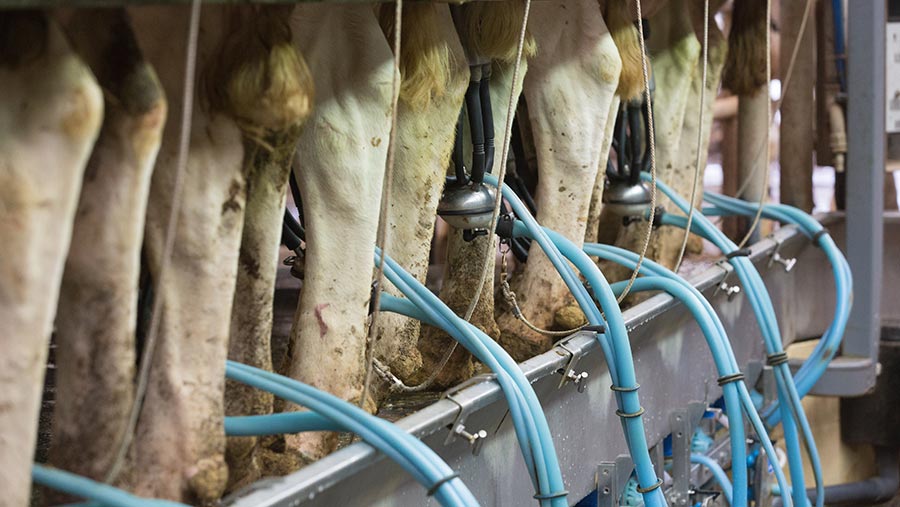Milk prices static despite uplift in wholesale demand
 © Tim Scrivener
© Tim Scrivener Gains from improved wholesale dairy commodity markets are yet to pass through to farmgate milk prices, with many processors confirming another month of price holds into December.
UK wholesale prices for cream, butter, skimmed milk powder and cheddar were all up during October.
See also: Arla to sell on-farm environmental gains to retailers
Milk market indicators also rose in the past month, with the actual milk price equivalent (Ampe) jumping by 20% in October on the previous month to 34.53p/litre, while milk for cheese value equivalent (MCVE) increased marginally to 34.58p/litre.
Barber’s Cheesemakers reported that this improvement in market sentiment has been driven by a downturn in EU and UK milk supplies.
Michael Masters, head of milk supply operations at Barber’s, said that as the company concluded 2023 milk pricing for December, it could report a more tangible change in dairy markets.
The Global Dairy Trade (GDT) index has also been on an upwards trajectory for the past two months, and increased by 4.3% at the latest fortnightly auction.
Edward Lott, managing consultant at Kite Consulting, told Farmers Weekly that, while it was good to see that markets had bottomed out and there was a positive outlook based on current market conditions, many farmers were still being paid well below the cost of production.
“Cashflow is still extremely tight and negative for many, and I know that many farmers are having additional bank funds and extending credit in order to meet their needs during this trough,” Mr Lott said.
Kite Consulting models show that, for those producers at the medium to low end of the price league, cashflow will now be negative, and this is being compounded by high interest rates.
Supply
Global milk supplies have stabilised, and in some parts of Europe there are signs of a production slowdown, according to Arla.
In the UK, low farmgate prices have been affecting milk volumes, with industry figures showing supplies running at about 3% below this time last year.
The milk-to-feed-price ratio is used as an indicator of whether supply is likely to increase or decrease. During the summer months, the ratio was at about 1.07, which is well into the contraction zone.
Mr Lott said forage was generally abundant this year, so people were feeding higher quantities of forage and less concentrate, and while that saved costs it also resulted in lower milk output.
“We know that when the milk-to-feed-price ratio is low, people cut feed inputs and that cuts production, but it can also have implications for fertility and growth going forward,” he said.
Mr Lott suggested that any positive farmgate price moves could still take six to eight months to pass through to any change in milk supply.
Milk price holds
Standard manufacturing litre, 4.2% butterfat and 3.4% protein
November
- Arla hold at 35.21p/litre
December
- First Milk hold at 36p/litre
- Barber’s Cheesemakers hold at 36.14p/litre
Standard liquid litre, 4% butterfat and 3.3% protein
- Muller hold at 36.5p/litre
- Freshways hold at 35p/litre
